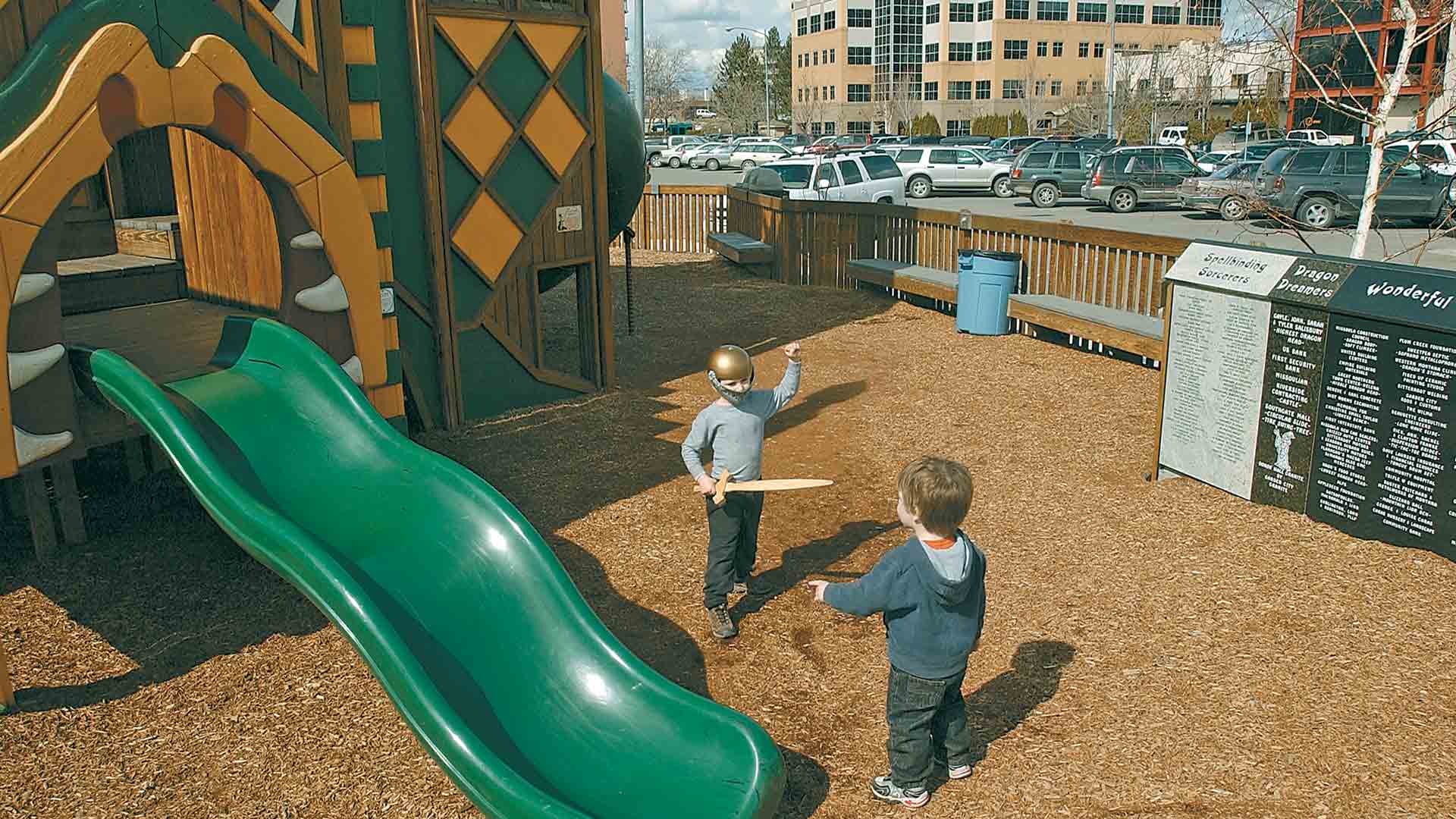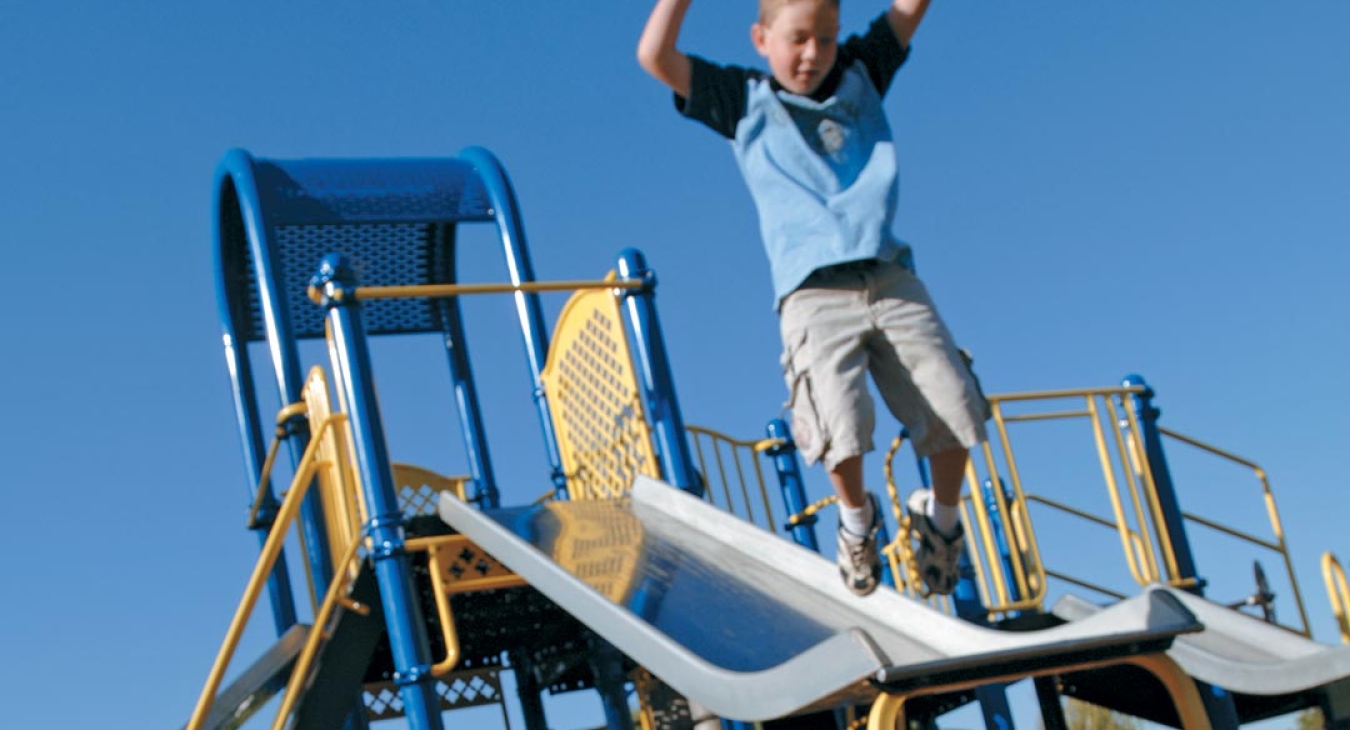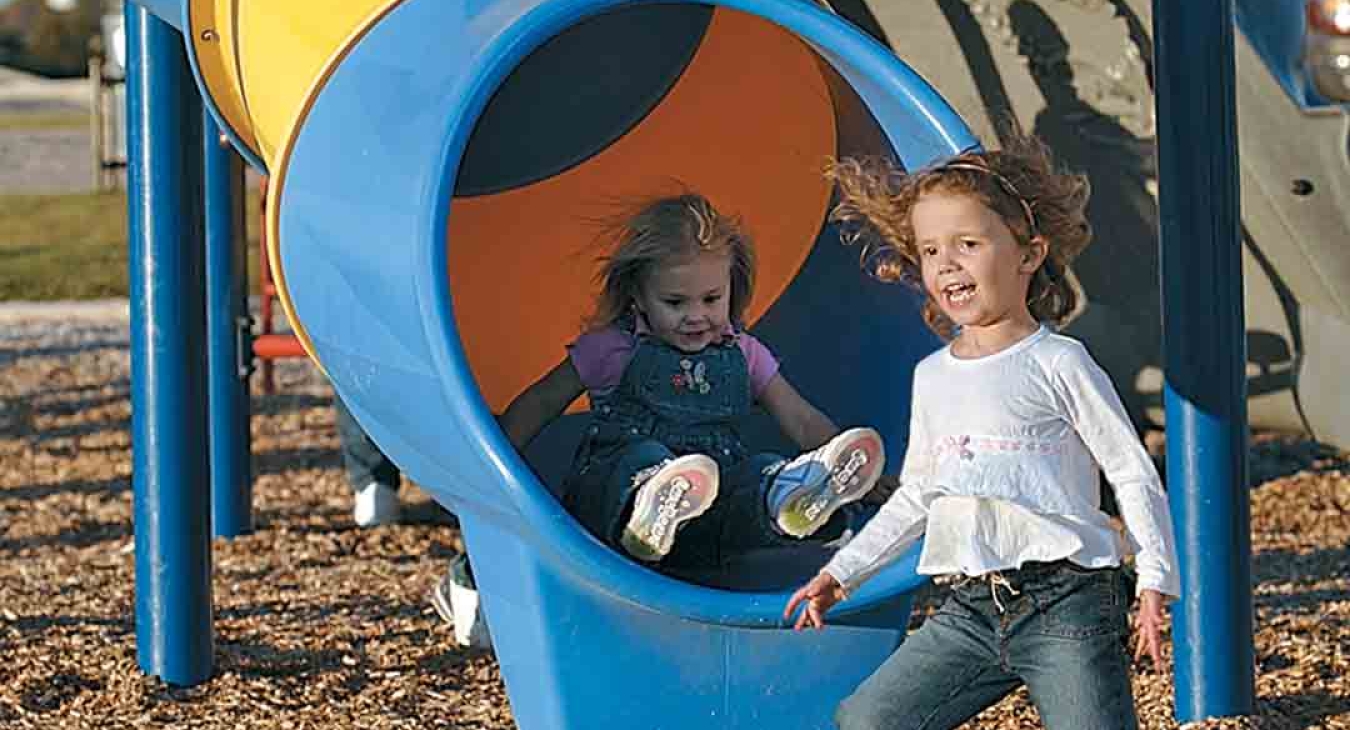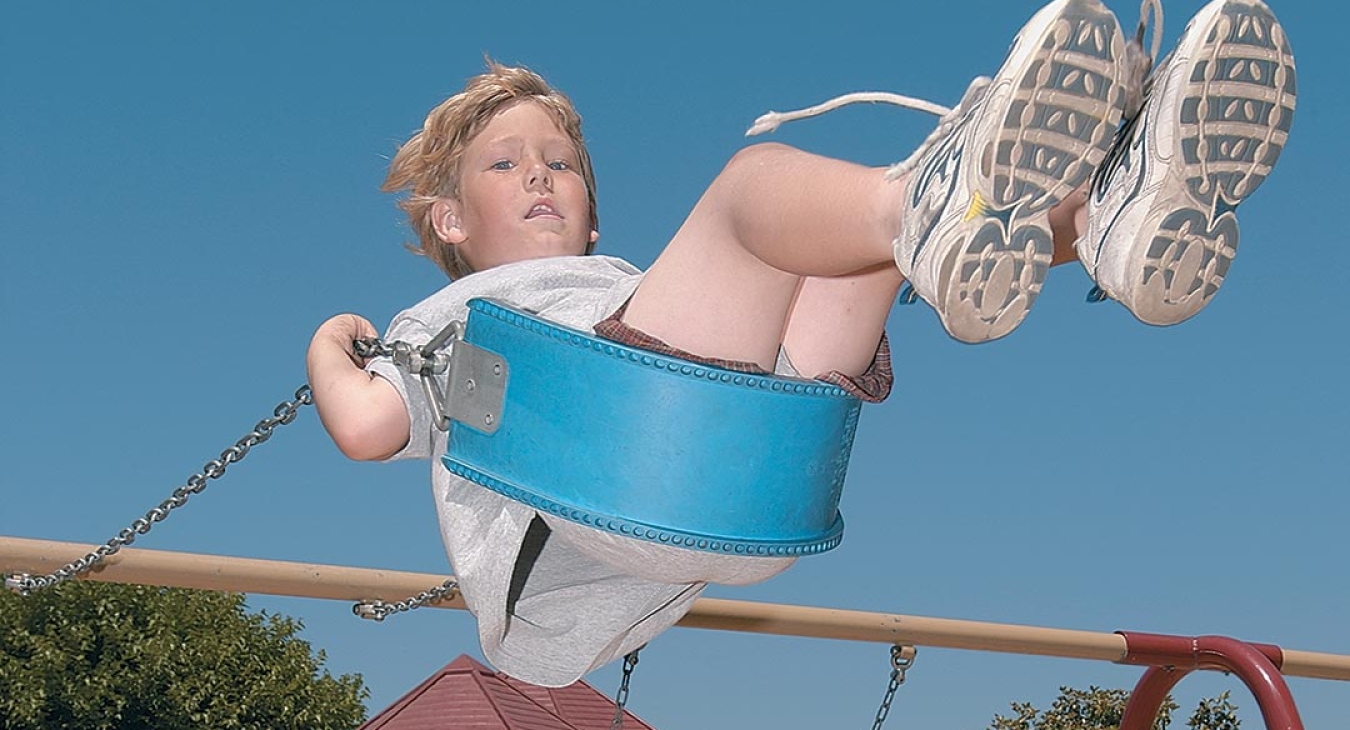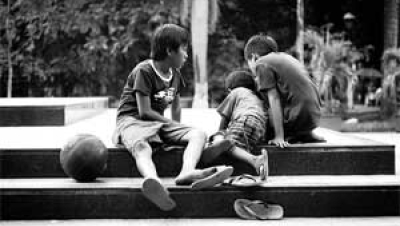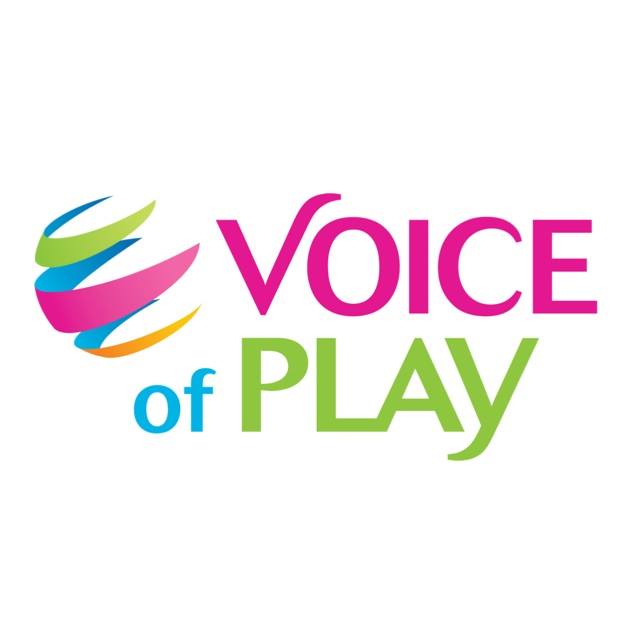Does Play Matter?
The current erosion of free, spontaneous outdoor play and recess is fueled by a widespread misunderstanding of the differences between free, spontaneous play and structured play including sedentary electronic entertainment. Free play is a play that is created, organized, and conducted by the child with minimal or no direction or interference by adults. Historically, free play dominated children’s self-chosen activity in school recess, neighborhood, and countryside. Such play is disappearing in these settings.
Structured play is a play that is directed by adults and/or imposed by rules or regulations of a game, curriculum, guide, or programmed play device. Organized sports, internet play, and adult organized and directed activities are now replacing the traditional free play and self-chosen and self-regulated games of American children. As children’s development proceeds and cognitive, social, and physical skills become ever more sophisticated, spontaneous play is supplemented by games organized by the children themselves during recess and neighborhood play.
Here, in semi-structured play settings, children are free to construct workable guidelines, negotiate and follow rules, or begin, quit, or change the nature of play to accommodate expanding skills and interests. Suggestions and modeling by older peers, television sports models, and involvement in pee-wee, bantam, and little league sports take structure to a new level as adults and high-tech play programs and devices impose ever more strict rules, demands, and motives for correctness and winning.
Misunderstanding the value of free play is evident in many instances of interference by adults in children’s play. School recess is set aside to make way for academics, yet free play is young children’s natural, biologically programmed way of learning – learning that supports, rather than detracts, from academics. Obsession or addiction to passive internet play, promoted by fear of outdoor predators, steals from active neighborhood play. Playground designers, handymen, architects, equipment manufacturers, and others who create built playgrounds can help improve and expand children’s play by enhancing fixed, standard equipment with relatively inexpensive but very developmentally valuable construction materials, loose parts, tools, storage, nature areas, sand and water, etc.
A growing number of schools prohibit some of the most developmentally valuable forms of free play such as chase, tag, rough and tumble, etc., and eliminate selective types of play equipment such as swings, seesaws, and rotating devices. Such games, with properly trained teachers, and such equipment, well-designed and maintained, are reasonably safe and developmentally valuable. Training programs on play and play environments, child development and play leadership for public school teachers are woefully inadequate. Bullying, for example, which is a common complaint and reason for depriving children of free play, is an adult problem, subject to prompt correction by skillful play leaders. As state legislators awaken to the destructive health consequences of play deprivation, they draft legislation requiring structured play (physical education) in schools but assign only limited attention to traditional, unstructured recess play. Both structured and free play have many common benefits, but the values of free play extend beyond those of structured play.
Children construct mental schemes or structures through free play, helping them organize and make sense of their experiences – in essence to build ladders essential for later learning. But there is more to such constructions than simply watching and waiting.
Children’s knowledge and development can be assisted by older children and adults.
Early in life, children sort out and learn from models, plots, and relationships through pretend play – the building blocks of literacy. They create, send, and receive verbal and physical signals to play with peers, create their own social and cultural structures, and construct play frames through seemingly simple doctor and nurse play or elaborate superhero play. They communicate through both talk and action, negotiate and refine their play frames or themes as they enact them. The foundations of literacy are at work as they explore, create, share, negotiate, express, build, represent, draw, paint, modify, toy with, or play with. They act out ideas, images, and impressions to own them – to understand, to build foundations, to deepen meanings, and to create ever more complex forms of play.
The multiple meanings of free, spontaneous play are still so complex as to defy a single definition, yet a century of research gives a solid base for concluding that play is valuable for development and that its unique qualities cannot be fully matched by organized, structured play. Free play does not include structured play or passive electronic play. Free play encourages unbridled expression, imagination, creativity, negotiation, and freedom from excessive adult interference or didactic directives, rules, regulations, or restrictions. When adults direct play, some of the benefits of creativity, problem-solving, social learning, and leadership skills are lost. Most readers will remember the times when they learned, prospered, and survived in their play without undue interference from adults and the substitution of electronics.
Research reviews by prominent scholars and prestigious organizations lend credibility to the tenet that children’s play is essential for healthy development. The New Policy Institute’s review (Cole-Hamilton, et al, 2002) concluded that free or unstructured play promotes physical skills, physical and mental health, and academic learning. The American Academy of Pediatrics review (Ginsberg, 2006) concluded that play is essential for child development, brain development, and health. The Stanford Prevention Research Center Report (2007) concluded that both recess and physical education and outdoor play at home are fundamental requirements for healthy child development. The evidence mounts that an hour of daily outdoor play and a good diet are essential antidotes for a growing list of children’s health problems.
Yet another benefit of free play resides in its therapeutic qualities. Through playing out fears, phobias, injuries, and conflicts, children learn to cope. Such play is often linked to professional play therapy and trained play therapists at work following natural disasters such as hurricanes, floods, and tornadoes; man-made disasters such as war, genocide, and other forms of brutality; and play therapy in children’s hospitals. However, play carries natural therapeutic powers and children reap its benefits wherever they have the freedom to engage in free play. When parents, classroom teachers, play leaders, and physical education teachers work together to maintain a balance of free and directed play, the benefits are comprehensive. The consequences of not playing or depriving children of play are profound and will be the subject of the next paper in this series.
References:
- Cole, Hamilton, I., Harrop, A., & Street, C. (2002). The value of children’s play and play provision: A systematic review of the literature. New Policy Institute: Retrieved February 2007.
- Ginsberg. K. R. Clinical report: The importance of play in promoting healthy child development and maintaining strong parent-child bonds. American Academy of Pediatrics. Retrieved February 2007 from <AAP Play>.Stanford Prevention Research Center (2007). Building generational play: Addressing the crisis of inactivity among America’s children. Palo Alto, CA: Stanford University School of Medicine.

